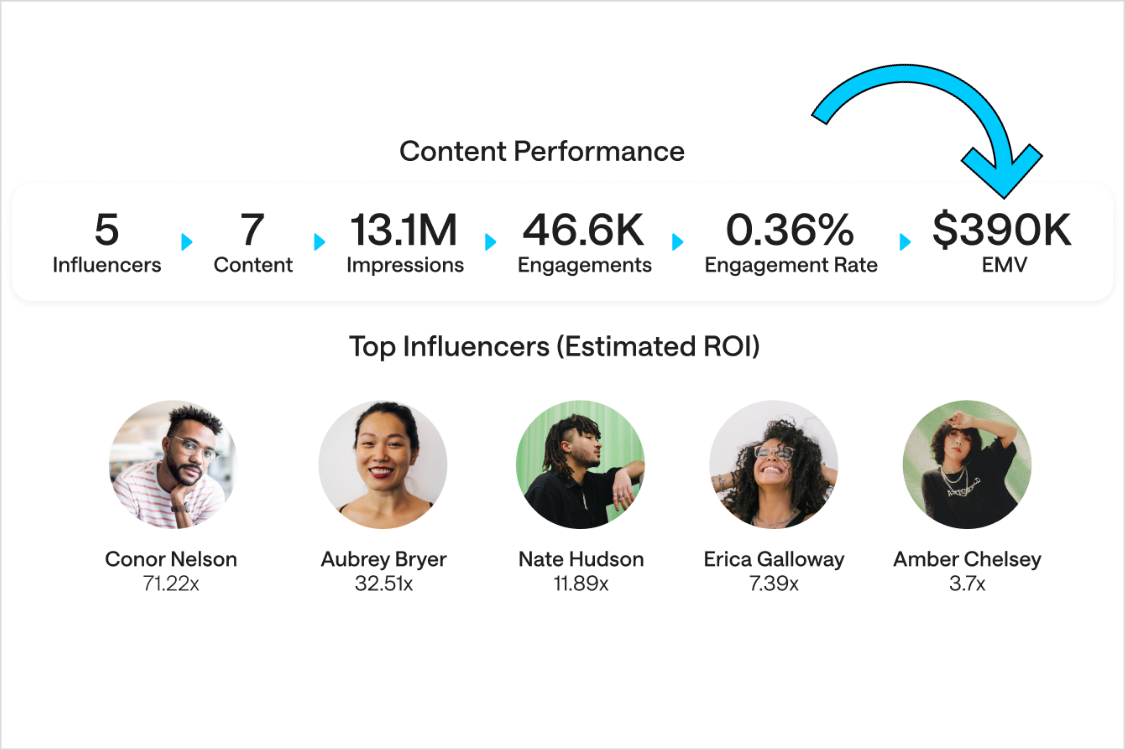You’ve seen hundreds of sponsored posts on your social media feeds, you’ve clicked a link in bio, and maybe even scrolled an Amazon storefront or two.
Still, you wonder — "Is influencer marketing really worth the investment?"
Short answer: Yes.
Read on to learn about the ROI of influencer marketing, its price, and why you should make it a part of your strategy in 2024 — plus, three brands who saw their creator-led efforts pay off.
Table of Contents
3 Impactful Influencer Marketing Campaigns
ICYMI: Influencer marketing is on track to become a top marketing strategy for brands.
And for good reason — the industry is expected to reach a value of $22.2B by 2025.
So, teaming up with influencers in your niche provides the perfect opportunity to boost your bottom line.
Not convinced? Here are three brands who created successful influencer marketing campaigns (with the help of Later Influence™) to inspire you:
#1: Reebok x Zumiez
When Reebok teamed up with Zumiez to elevate their “Club C 85” shoe for the holiday season, they knew an influencer marketing campaign powered by Later Influence would be the perfect way to spread the word.
The plan? Garner engagement using Gen Z creators who prioritize street style and individuality.
And it worked — across Instagram and TikTok, the campaign drove a collective 927.6K impressions and 55.6K engagements, resulting in a 6% average engagement rate.
FYI: Later Influence is an influencer marketing platform trusted by enterprise brands to plan, grow, and manage their campaigns. Learn more.
#2: Express
When retail clothing brand Express drove 168% ROI in sales via its enhanced ambassador program launch, they proved influencer marketing is very much in style.
How did they do it? By migrating their existing program to Later Influence and going all-in on their influencer marketing strategy.
Enough said.
#3: Champs Sports
What do you get when you combine athlete-influencers and retailer Champs Sports?
Wins across the board.
As a result of four major campaigns, Champs Sports gained 3M impressions, 353.1K engagements, and an average engagement rate of 11.8% — knocking their benchmarks out of the park.
Dive into more of our favorite influencer marketing campaigns: 7 Influencer Marketing Campaigns to Inspire Your Next Launch.
How Much Does Influencer Marketing Cost?
The influencer marketing industry is still fairly new — so there’s unfortunately no universal one-size-fits-all pricing rule.
This means rates fluctuate based on an influencer’s engagement rate, the length of the agreement, and the type of content you’re looking for.
That said, historically, many digital marketers adhere to a $250-$450 per 10K followers rule, as a starting point.
TIP: Read our Creator Rates Report to learn first-hand what creators look for from brands.
How Do You Measure the Success of Your Influencer Marketing Campaigns?
It’s simple: You can’t measure the success of your influencer marketing campaigns without the right tools in place.
And according to Later’s Influencer Marketing Manager Kurtis Smeaton, it all boils down to your influencer marketing KPIs.
Whether you’re looking to boost brand awareness or drive sales, tracking (and analyzing) KPIs lets you understand what works and what doesn’t.
This way, you can make informed decisions, optimize your efforts, and ensure a strong influencer marketing ROI.
And while there are a handful of worthwhile KPIs to track, Kurtis identities these four as the top KPIs to lead successful top-of-funnel (TOFU) campaigns:
Conversions: “Share unique promo codes, affiliate links, and UTM links with your influencer partners to track their clicks (and conversions).”
Brand Lift: "Parter with niche influencers who will drive up your organic traffic and social media following."
Engagement: “The less followers an influencer has, the higher their average engagement rate. Micro influencers are great to partner with if you have a smaller budget.”
Quality of Content: “Prioritize quality content that you can repurpose for your brand's website or paid ads for maximum conversions and engagement. Paid ads allow you to make the link available right in the post, proving to be a huge win.”
To dig deeper into all things influencer marketing KPIs, bookmark this blog: 8 Influencer Marketing KPIs to Track for Success in 2024.
How Do You Measure Your Influencer Marketing ROI?
Simply put, your influencer marketing ROI determines whether your campaign is profitable or not — the higher profitability, the more successful the campaign.
For a positive ROI, your revenue should exceed total spend (including ad spend, production costs, and influencer compensation).
One way to track your ROI is manually via a formula, like: ROI = (revenue - total spend) / total spend x 100.
However, depending on your campaign goals, manually calculating every campaign can be time consuming.
Enter Later Influence's new ROI reporting tool. With it, you can measure your influencer marketing campaign's ROI automatically.
Even better? It includes additional data like your EMV (earned media value) — guaranteeing accuracy and the reigns to optimize future campaigns again (and again).

And there it is — all the proof you need to go all-in on influencer marketing in 2024.
Whether you’re reevaluating your marketing efforts or scaling your influencer marketing strategy — we can’t wait to see your next campaign.
Schedule a call with Later to measure and boost your ROI, today.




